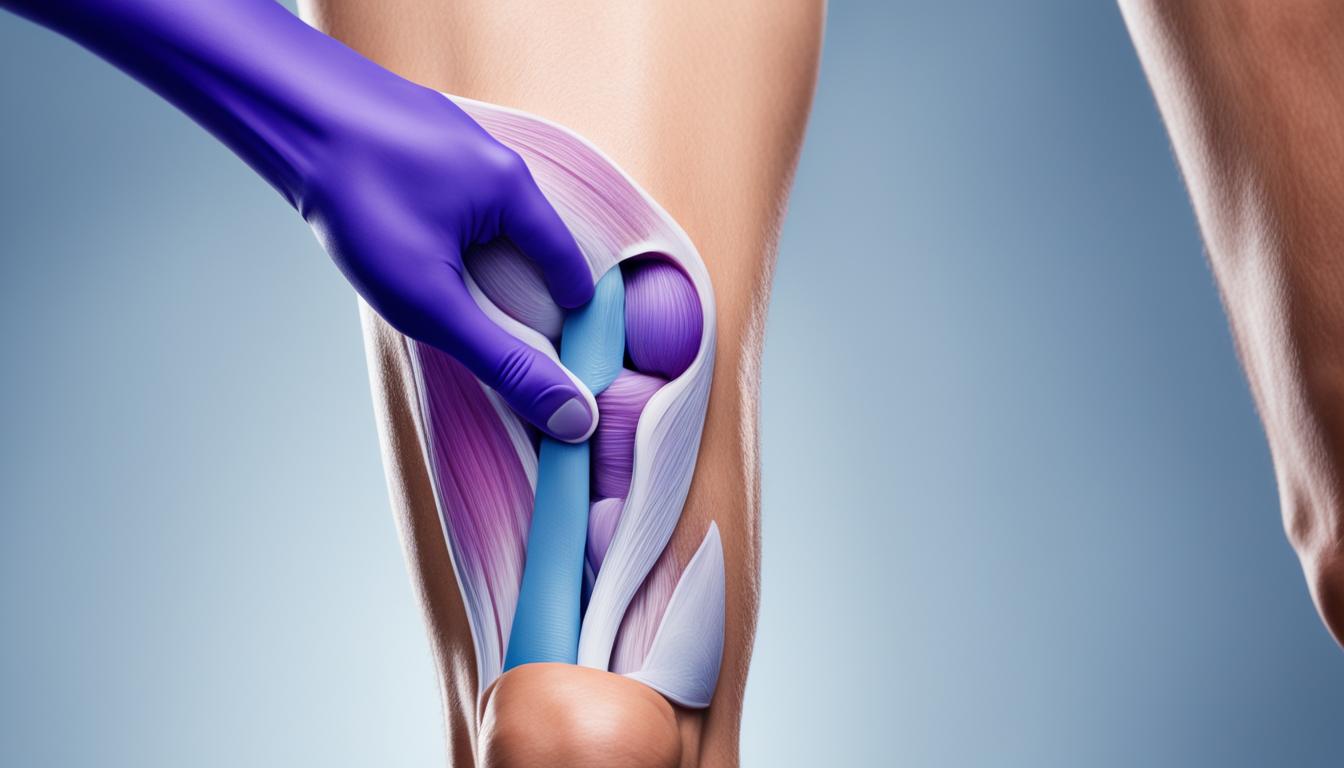Restless Legs Syndrome (RLS), known as Willis-Ekbom Disease, is a condition that makes your legs feel strange. You might feel your legs tingling, crawling, or creeping. This often comes with a strong need to move your legs. It’s hard for people with RLS to relax or sleep because these feelings get worse when they are still.
RLS affects between 5-15% of people, with more cases in older adults. It can be due to genes, especially if others in your family have it. Sometimes, it happens because of other health problems or the drugs you take.
To diagnose RLS, doctors need to look into your medical history and do a physical exam. They might recommend lifestyle changes like more exercise and avoiding certain foods and drinks. They could also offer medicines that help, such as those that target your brain’s chemicals. In some exciting cases, new methods like stimulating your nerves or using stem cells have been successful too.
- RLS (Restless legs syndrome) is a sensory-motor disorder characterized by uncomfortable leg sensations and an urge to move the legs.
- Symptoms of RLS worsen during periods of rest or inactivity and can interfere with sleep.
- RLS may have a genetic component and can also be secondary to other underlying medical conditions or medication use.
- A thorough medical and neurologic evaluation is necessary to diagnose RLS.
- Treatment options for RLS include lifestyle modifications and medications, as well as innovative approaches like neurostimulation and stem cell therapy.
Types, Risk Factors, and Complications of RLS
Restless Legs Syndrome (RLS) is split into two main types: primary and secondary. It’s important to distinguish between them to choose the right treatment for RLS individuals.
Primary RLS
Primary RLS, or idiopathic RLS, is tied to genetics and affects the central nervous system. It appears without any medical causes or from using medication. People with this type feel unpleasant leg sensations and a strong need to move their legs. The urge to move worsens when they’re trying to rest or sleep.
Secondary RLS
Secondary RLS is linked to other medical issues or certain drugs. Causes can include iron deficiency, kidney problems, diabetes, and some types of nerve damage. Drugs like antipsychotics, antidepressants, and antihistamines can also spark secondary RLS. Dealing with the root condition or changing medications can ease RLS symptoms.
It’s key to talk to a doctor to pinpoint what’s causing RLS and come up with a treatment plan.
Risk Factors
Several factors can up the chance of developing RLS. These include:
- Elderly: The older you are, the more likely you are to have RLS.
- Women: More women than men get RLS.
- Family history: If someone in your family has RLS, you might get it too.
- Low iron levels: A lack of iron in your blood can raise RLS risks.
- Certain health conditions: Kidney disease and diabetes are linked to higher RLS risks.
Complications
RLS can bring about various issues for your body and mind. These problems include:
- Not enough sleep: RLS symptoms can make you lose sleep, causing a daily lack of rest.
- Always tired: A lack of good sleep can leave you exhausted and with less energy.
- Can’t focus: RLS can mess with your sleep and make it hard to concentrate during the day.
- Feel sad: It can make you feel bad and not want to do your daily activities.
- Stressful feelings: Dealing with RLS can make you anxious just thinking about your legs and sleep.
- Heart risk: Experts think RLS could up your chances of heart problems and high blood pressure.
If you think you might have RLS, it’s important to get checked by a doctor. Knowing the type, why it happens, and how to manage RLS can make life better for those affected.
Latest Advancements in RLS Treatment and Conclusion
In recent years, big steps forward have been taken in fighting Restless Legs Syndrome (RLS). Scientists and doctors are looking into gene therapy, brain stimulation, and new drugs. These new options are meant to help people with RLS find better, more personalized ways to cope.
Doctors are also finding success in treatments like neurostimulation and stem cell therapy. These methods can help with the constant need to move your legs. Neurostimulation uses small electric pulses to help calm nerves. Stem cell therapy, on the other hand, might be able to repair damaged cells.
It’s vital to know that RLS doesn’t yet have a cure. But, the progress being made is offering new hope for a better life. Researchers are working hard to come up with more solutions and improve current ones. They hope to learn more about RLS and how to treat it effectively.
In the end, the latest advancements give those with RLS a new reason to hope. With continuous research and new methods like neurostimulation and stem cell therapy, better days may lie ahead. Although we still have much to learn about RLS, these developments provide both patients and doctors with additional options to fight this tough condition.

